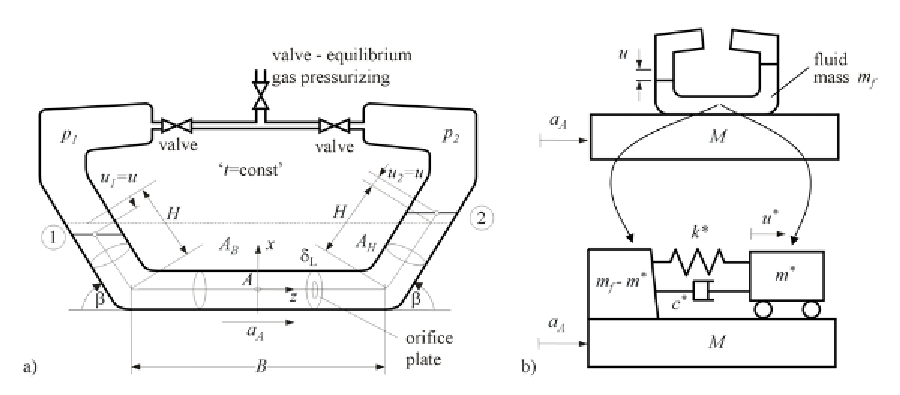Geology Reference
In-Depth Information
TLCGD DYNAMICS
Real size applications have been reported in a 26
storey, 106 m high hotel in Japan, Teramura et
al. (1996), and the tallest building in Vancouver,
Canada, the 48 storey One Wall Center, RWDI
consultant engineers (2011). The focus of the
present work is to introduce the TLCGD as flex-
ible, extremely simple and efficient vibration
reducing device with possible applications as
dynamic absorber in base excited asymmetric high
raised buildings, additional damping device for
a novel base isolation system, temporary mobile
unit applied to the cantilever method of bridge
construction, a permanent vibration reducing
device for earthquake, wind or traffic induced
coupled bending torsional bridge vibrations as
well as earthquake protection for large dams. For
bridges with dominating vertical flexural vibra-
tions the novel space saving pipe-in-pipe design
of vertical TLCGD (VTLCGD) renders additional
efficient damping.
In this section a universal description of the
TLCGD dynamics is given based on the nonsta-
tionary Bernoulli's equation applied in a moving
frame. Since the TLCGD is considered indepen-
dently, its application to civil engineering struc-
tures is based on substructure synthesis. Conse-
quently the TLCGD equations of motion and the
interaction forces have to be determined before
coupling absorber and host structure. Many dif-
ferent TLCGD geometries have been proposed,
all of them result from a derivation of the original
U-shaped device. It consists of one horizontal and
two symmetric vertical pipe sections of length
B
and
H
with piecewise constant cross sectional
areas,
A
H
and
A
B
. The V-shaped TLCGD is ob-
tained by inclining the vertical sections by an
opening angle
β
, see Figure 1a.
The most comprehensive description for com-
bined multi-axial translations and rotations can
be obtained applying the non-stationary Ber-
noulli equation generalized for moving reference
Figure 1. a) TLCGD of general shape with a relative streamline from 1-2 at a time instant t, symmetric
arrangement with rigid pipe b) Analogy between TMD and TLCGD, the liquid mass
m
f
is split into an
active mass
m
*
and a dead weight load
m m
*
=
−
m
f

Search WWH ::

Custom Search